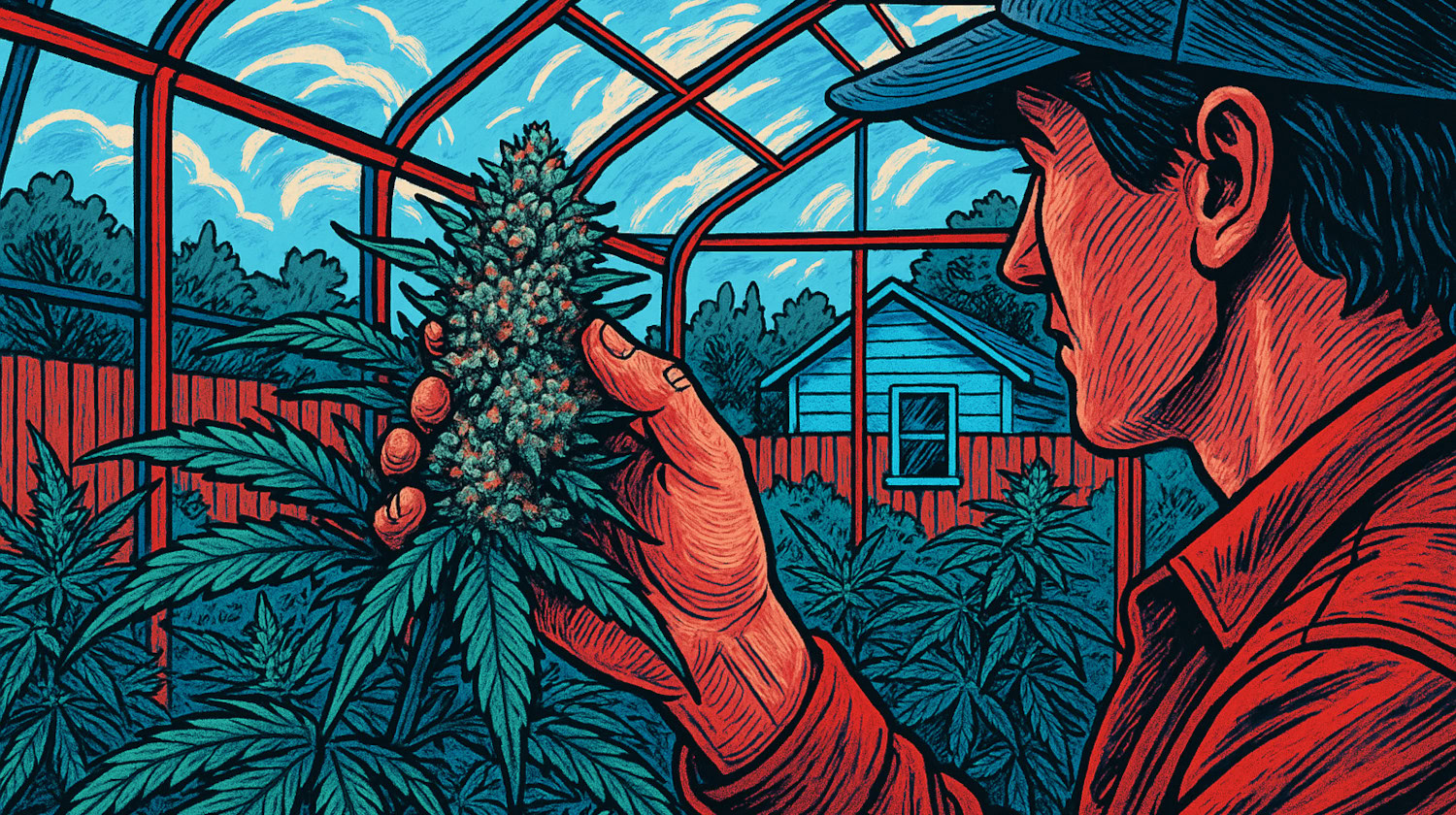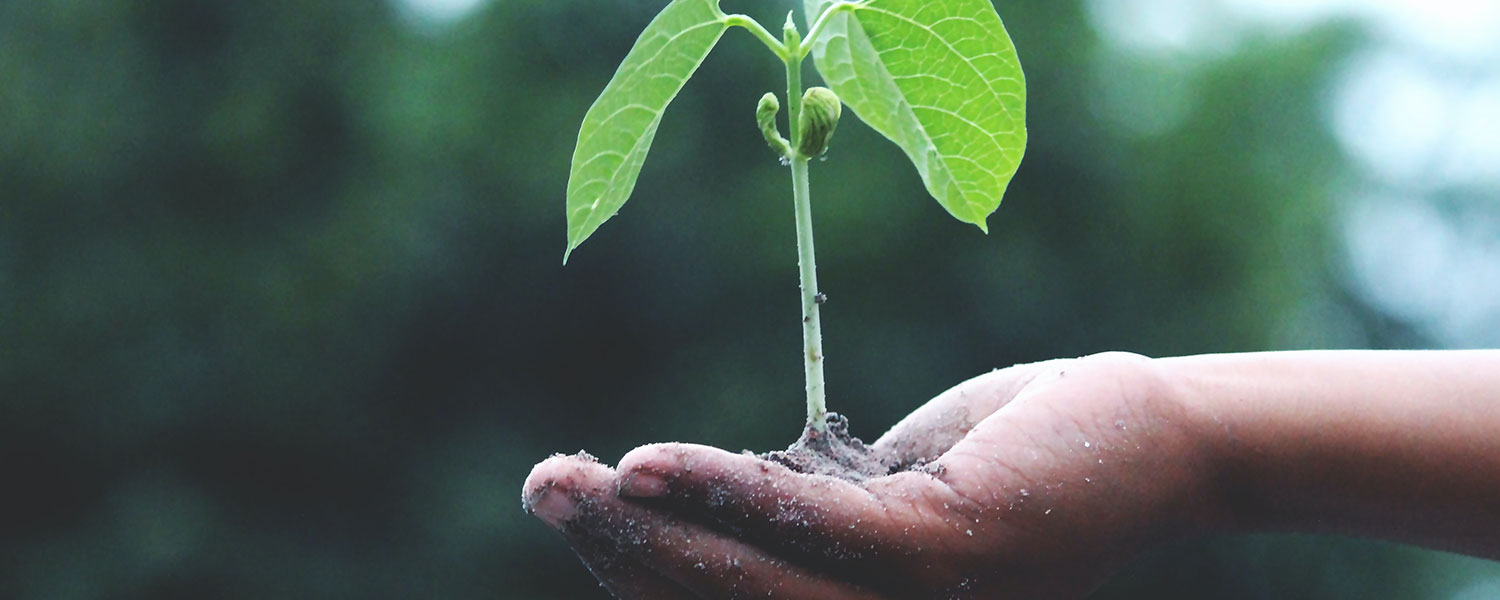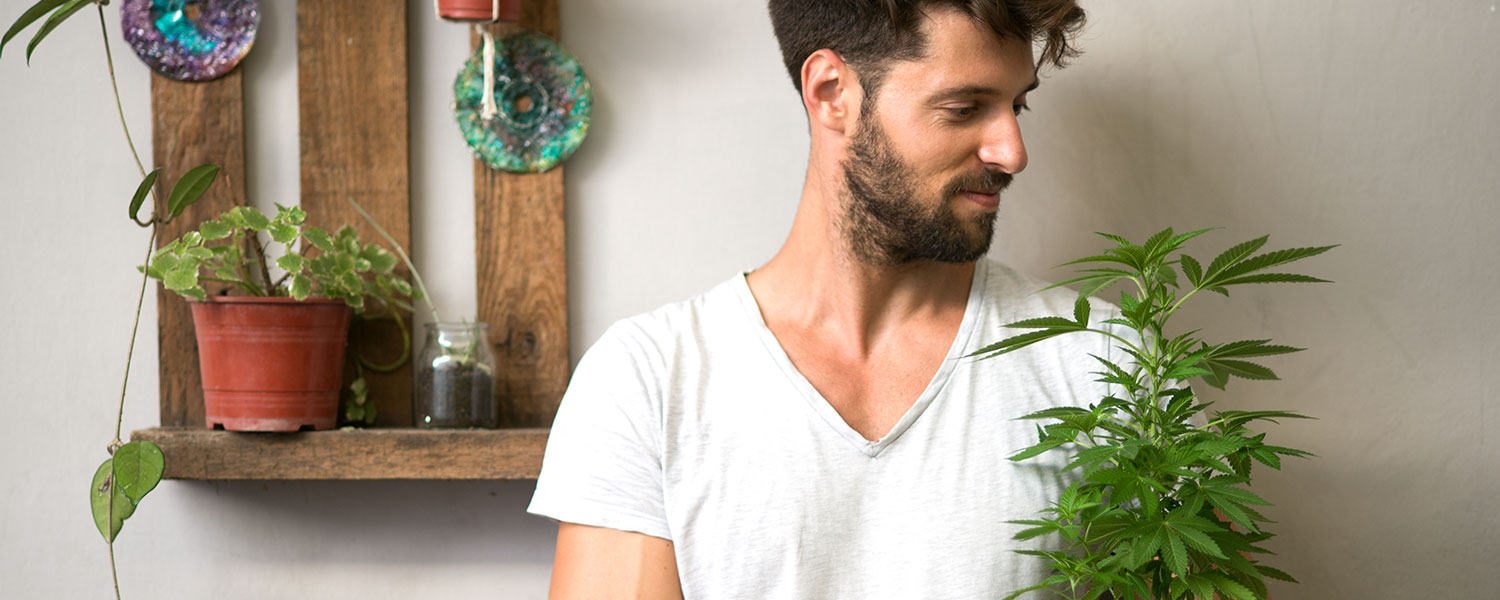In This Article
- Where Can You Legally Grow Cannabis?
- What States Can You Grow Your Own Weed?
- States Where Home Cultivation is NOT Allowed
- Medical Cannabis States Where Home Growing is NOT Allowed
- Benefits of Growing Your Own Cannabis At Home
- How to Cultivate Cannabis at Home
- What materials will you need?
- How to Get a Cultivation License
- Conclusion
Key Takeaways
- How many plants you can grow and whether you can grow at all will vary from state-to-state.
- In many states, having a medical card provides greater access to grow cannabis.
- Growing cannabis at home allows patients to save money and ensure they always have their preferred strains.
Cannabis is a plant like any other; give it the right light, water, and fertilizer, and it’ll grow. When it’s mature, it’ll produce flowers. But while anyone with a green thumb could have success cultivating cannabis, growing cannabis at home remains tightly regulated. And there are high penalties for violating those regulations – even in states where medical and recreational cannabis is legal. For budding home growers, the first question is: “Is it legal to grow your own weed?”
Cannabis growing laws vary by state, and they can be hard to understand. Rules for recreational users are often not the same as those for medical patients. Some states worry that home growing could help the illegal market or hurt new legal businesses. Because of this, they’ve made strict rules that some feel are unfair or too harsh.
Where Can You Legally Grow Cannabis?
Cannabis is federally illegal in the US. This leaves the states to enact their own medical and recreational cannabis laws. And while some states have similar regulations, no two states have quite the same rules governing cannabis use, possession, or cultivation.
When it comes to cannabis cultivation, there are a few common themes. Several states limit adults to two or three mature plants (but allow for more immature plants). Nearly all states have laws requiring that cannabis plants be secured and out of public view.
These laws serve two purposes:
- Keeping cannabis out of the reach of children.
- Protecting the grower from potential theft.
Violating these laws could result in legal action, even in states where home cannabis cultivation is allowed. This is especially true for plants in public view. If people can see the plants, they can report them.
It’s always best to use discretion and secure your cannabis plants when cultivating at home.
What States Can You Grow Your Own Weed?

Not all states with legal cannabis programs allow home cultivation. Each state has its own laws and limitations on cultivation. Likewise, regulations are actively changing and evolving, so it’s best to double-check the current cannabis laws in your state before setting up your home grow.
| State | Medical, Recreational, or Both? | Cultivation Laws |
| Alaska | Both | Up to 3 mature and 3 immature plants are allowed. |
| Arizona | Both | Up to 6 plants are allowed at private non-commercial residences. |
| California | Both | Adults over 21 may cultivate up to 6 plants. Medical users have no limit on cultivation unless imposed by their municipality. |
| Colorado | Both | Up to 3 mature and 3 immature plants. |
| Connecticut | Both | Up to 3 mature plants and 3 immature plants. Households with more than one adult may grow up to 6 mature plants and 6 immature plants. The plants must be locked up and grown indoors only. |
| Hawaii | Medical | Up to 10 plants. |
| Illinois | Medical | Up to 5 plants can be grown in a locked room that no one under 21 can access. |
| Maine | Both | Adults over 21 may cultivate up to 3 plants. Medical patients may cultivate up to 6 plants. |
| Maryland | Both | Adults can cultivate up to two mature plants within a private residence. |
| Massachusetts | Both | Up to 6 plants. |
| Michigan | Both | Up to 12 plants. |
| Minnesota | Both | Beginning August 1st, 2023, adults can cultivate up to 4 mature plants and 4 immature plants. |
| Missouri | Medical | Up to 6 plants. |
| Montana | Both | Adults over 21 may cultivate up to 2 mature and 2 immature plants. Medical patients may cultivate up to 4 mature and 4 immature plants. |
| Nevada | Both | Adults over 21 may cultivate up to 6 plants as long as they live more than 25 miles from a dispensary. Medical patients may cultivate up to 12 plants as long as they live more than 25 miles from a dispensary or they’re cultivating a strain that’s unavailable at the dispensary. |
| New Mexico | Both | Adults over 21 can cultivate up to 6 plants. Medical cannabis patients can cultivate up to 4 mature and 12 immature plants. |
| New York | Medical (Both 18 months after adult-use market opens) | Up to 3 mature and 3 immature plants. |
| Ohio | Both | Allow each adult, aged 21 and above, to cultivate up to 6 marijuana plants for personal use, with a maximum of 12 plants for a home with multiple adults |
| South Dakota | Medical | Approved caregivers and qualified patients can cultivate up to 3 plants. |
| Vermont | Both | Medical users are permitted to cultivate up to 9 plants, while recreational are allowed no more than 6 plants |
States Where Home Cultivation is NOT Allowed
The following states do not have medical or recreational cannabis programs (or have low-THC programs only), and they do not allow their citizens to cultivate cannabis at home.
- Alabama
- Georgia
- Idaho
- Indiana
- Kansas
- Kentucky
- Mississippi
- Nebraska
- North Carolina
- South Carolina
- Tennessee
- Wisconsin
- Wyoming
Medical Cannabis States Where Home Growing is NOT Allowed
The following states have medical cannabis programs but do not allow patients to grow their own cannabis. The Pennsylvania Senate has introduced a bill to allow for the cultivation of cannabis plants at home as of June 2023, but it is still in session.
- Arkansas
- Delaware
- Florida
- Iowa
- Louisiana
- New Hampshire
- New Jersey
- North Dakota
- Pennsylvania
- Utah
- West Virginia
Benefits of Growing Your Own Cannabis At Home
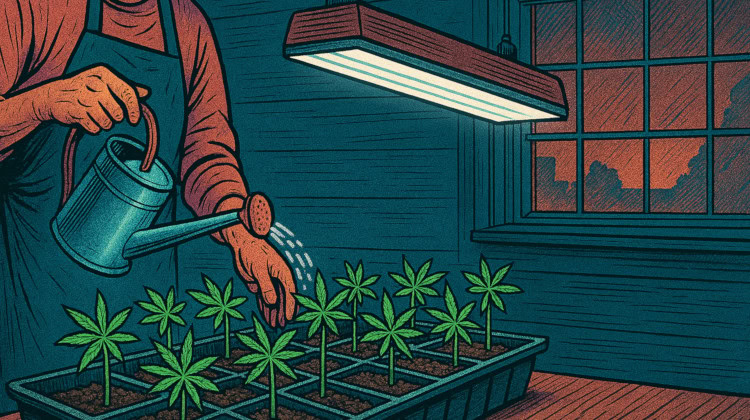
Growing your own cannabis has a lot of benefits, especially for medical patients. It can take time and effort, especially if growing indoors, but many find the results rewarding.
One of the biggest benefits is saving money. While setting up your grow space can cost a bit upfront, you’ll likely spend much less over time than you would buying from a dispensary. How much you save depends on how much you're allowed to grow in your state and how much your plants produce, but the savings can be significant.
Home growing also gives you better control over the strains you use. Dispensaries often change their selection, so the strain that helps you most might not always be available, especially in areas with a limited number of dispensaries. By growing it yourself, you always have access to what you find most helpful or preferable.
You also know exactly how your cannabis was grown. Some dispensaries and brands are open about how their cannabis is cultivated, but not all of them. When you grow your own, you can choose to grow organically, avoid chemicals, and control the quality from start to finish.
Additionally, some patients need a lot of cannabis to manage their condition, especially if they make strong extracts like Rick Simpson Oil (RSO). Growing your own flower is more cost-effective for larger amounts, though it’s crucial that patients remain within their state’s legal cultivation limits.
Lastly, home growers can even experiment with breeding their own strains. This lets you combine the effects and traits you want most — something you can’t really do with store-bought cannabis.
How to Cultivate Cannabis at Home
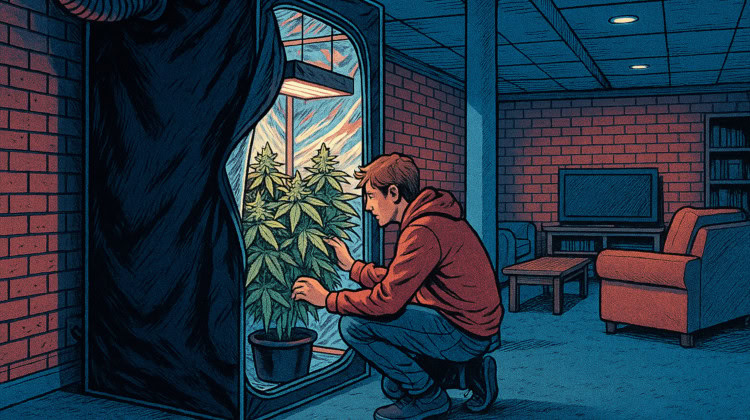
The cannabis plant is an annual flower. In nature, it begins as a seedling in the spring and grows throughout the summer, flowering near the end of the summer and into the fall harvest season. The cannabis flowers produce seeds that are embedded in the ground in fall. The plant dies off in the winter, and the new seeds sprout again in the spring.
When growing cannabis at home, you’ll want to mimic the plant’s natural lifecycle.
The cannabis plant has four stages of growth.
- In order to cultivate cannabis, you’ll first need to germinate cannabis seeds or find seedlings that are available for purchase.
- Once the seeds have sprouted, you can put them into a pot with soil. They’ll continue to grow for the next few weeks before entering the vegetative stage.
- Cannabis plants spend the majority of their life (and do a bulk of their growing) in the vegetative stage.
- Finally, the plant enters its flowering phase when the plant produces buds. This stage typically occurs 8 to 11 weeks after planting the seed.
After the flowering stage, it’s time to harvest your buds. From here, you’ll need to dry and cure the flower (and trim) so it’s ready to consume. Finally, you can store the harvested nugs in air-tight containers.
What materials will you need?
Growing cannabis indoors or outdoors both have their perks — it just depends on what you’re aiming for.
Indoor grows often deliver higher-quality buds because you can control every part of the environment, but you’ll need more gear to get started. On the flip side, outdoor growing is simpler and cheaper. You can often get going with just some soil, sun, and seeds. The tradeoff? You’re more at the mercy of nature, which can affect how your plants turn out.
No matter where you grow, you’ll need a few basics to start: seeds, starter trays, and probably a heat mat and a small light to help your seedlings thrive in their early days. Good soil and fertilizer also go a long way in keeping your plants healthy.
Once those seedlings get a few inches tall and start their vegetative growth, it’s time to move them to a bigger space. This often means a grow tent or some kind of enclosure. If you’re growing outside, some states even require your plants to be hidden from public view, so an enclosure may be legally necessary.
From there, lighting becomes key. A strong grow light with a timer can help mimic the natural cycle of the sun, including those shorter days that signal when it’s time to start flowering.
And if you’re feeling a bit adventurous? You can take it further. Micro grows let you make the most of tight spaces, while techniques like light deprivation can trick your plants into flowering early. With the right setup, it’s even possible to get more than one harvest in a season.
How to Get a Cultivation License
Home cultivation laws restrict cannabis consumers to growing a limited amount of plants under strict conditions. They are often enacted to allow people to grow what they need for personal use only. In order to grow cannabis commercially at a mass scale, or to grow cannabis you can sell to state-licensed dispensaries, you’ll need to apply for a commercial cultivation license.
Most states with legal adult-use sales have a separate government office that governs cannabis regulation, like California’s Bureau of Cannabis Control. Other states handle cannabis licensing through their health department or a similar government office. When seeking licensing, contact the appropriate office for your state.
Conclusion
Home cannabis cultivation has plenty of advantages and can be rewarding. But just because your state has a medical marijuana program doesn’t mean you can grow as much cannabis as you want, and it’s important to know and abide by the laws where you live.
The information in this article and any included images or charts are for educational purposes only. This information is neither a substitute for, nor does it replace, professional legal advice or medical advice, diagnosis, or treatment. If you have any concerns or questions about laws, regulations, or your health, you should always consult with an attorney, physician, or other licensed professional.
The information in this article and any included images or charts are for educational purposes only. This information is neither a substitute for, nor does it replace, professional legal advice or medical advice, diagnosis, or treatment. If you have any concerns or questions about laws, regulations, or your health, you should always consult with an attorney, physician or other licensed professional.

